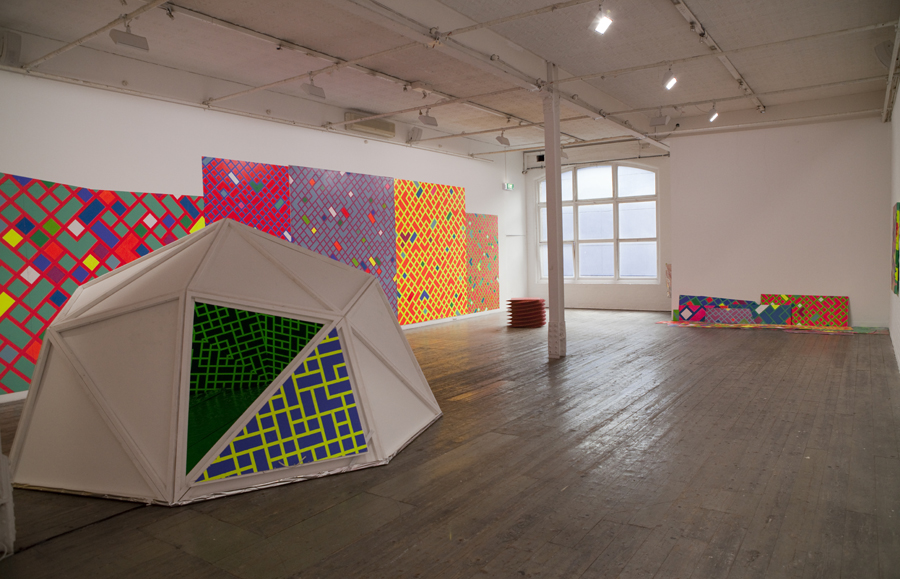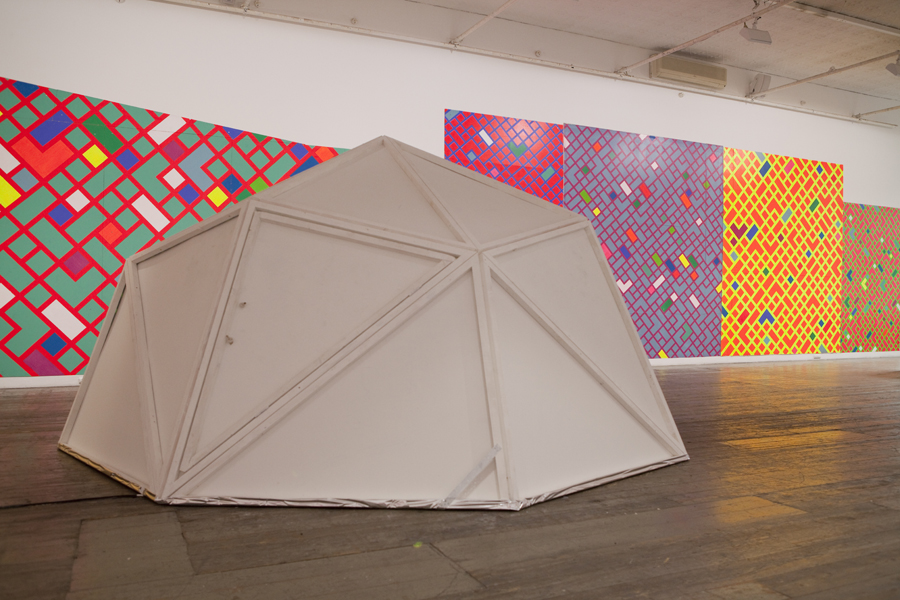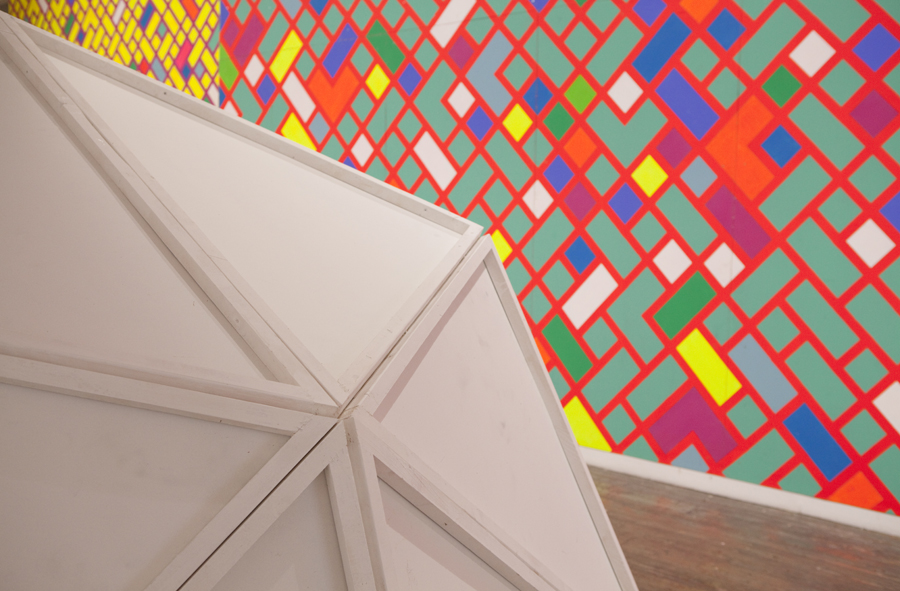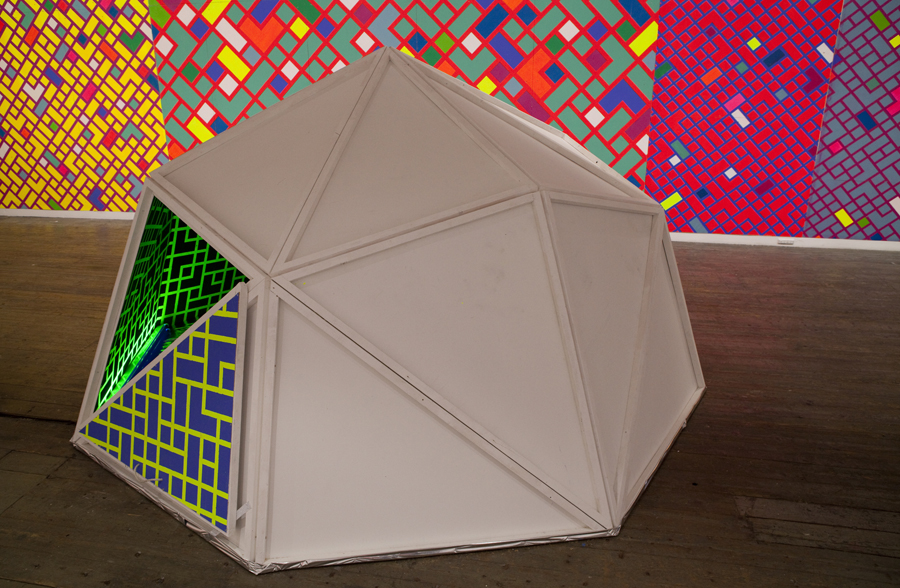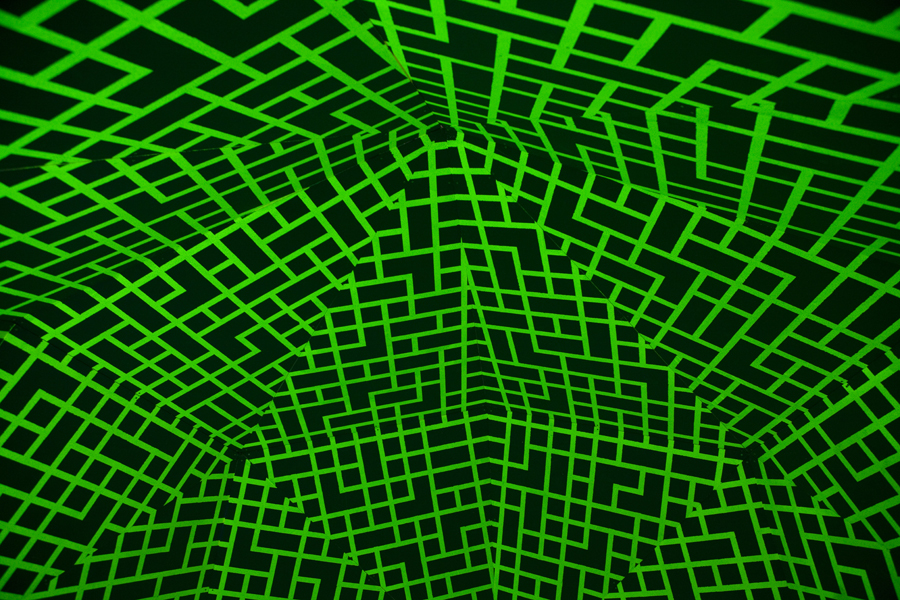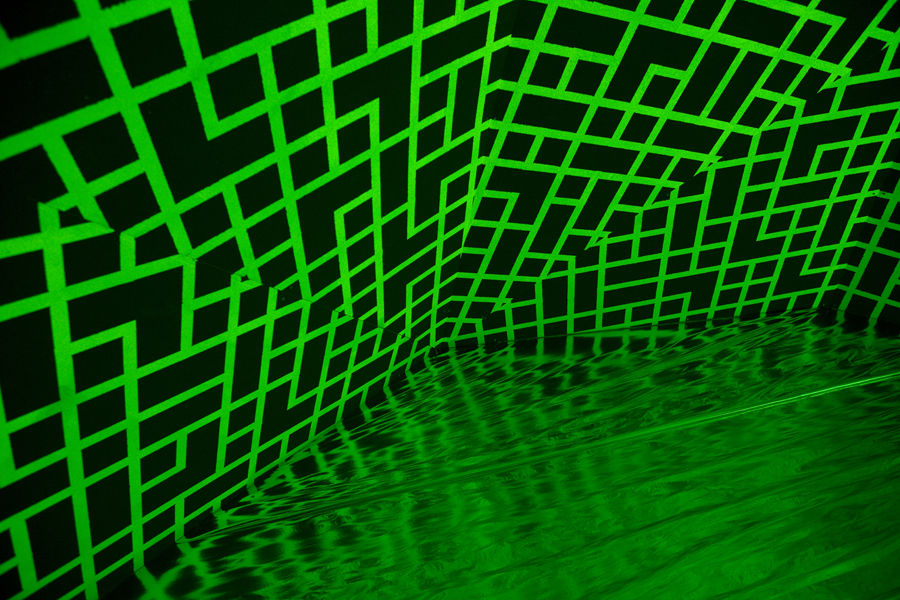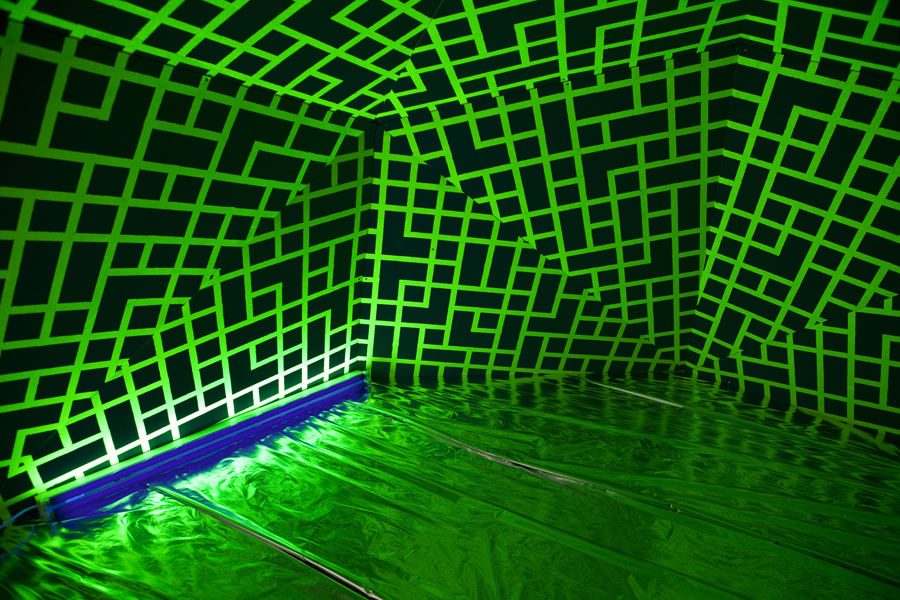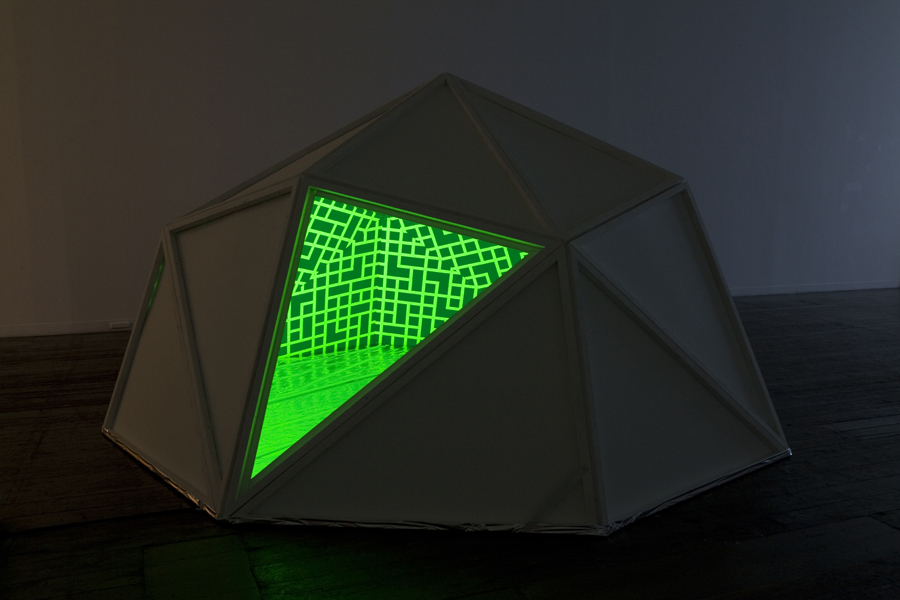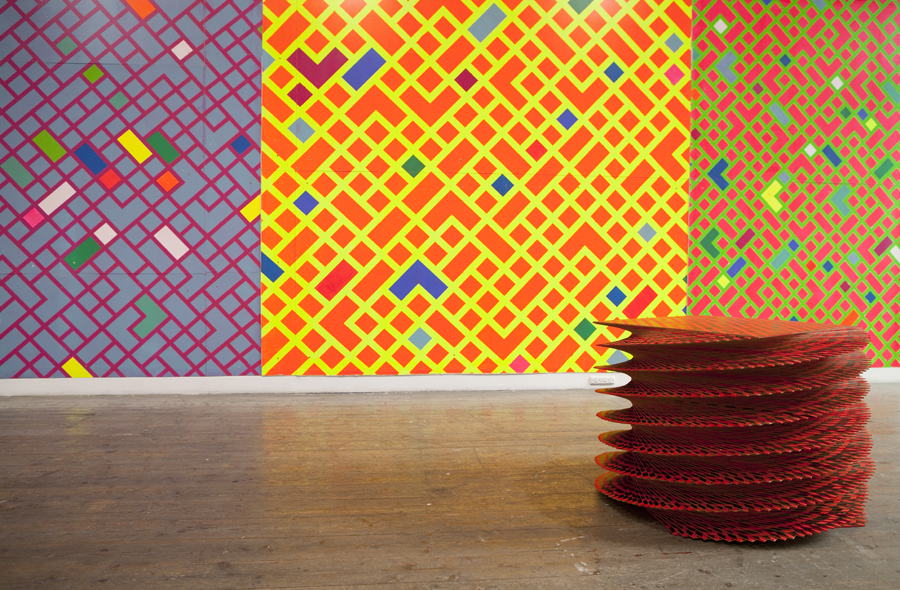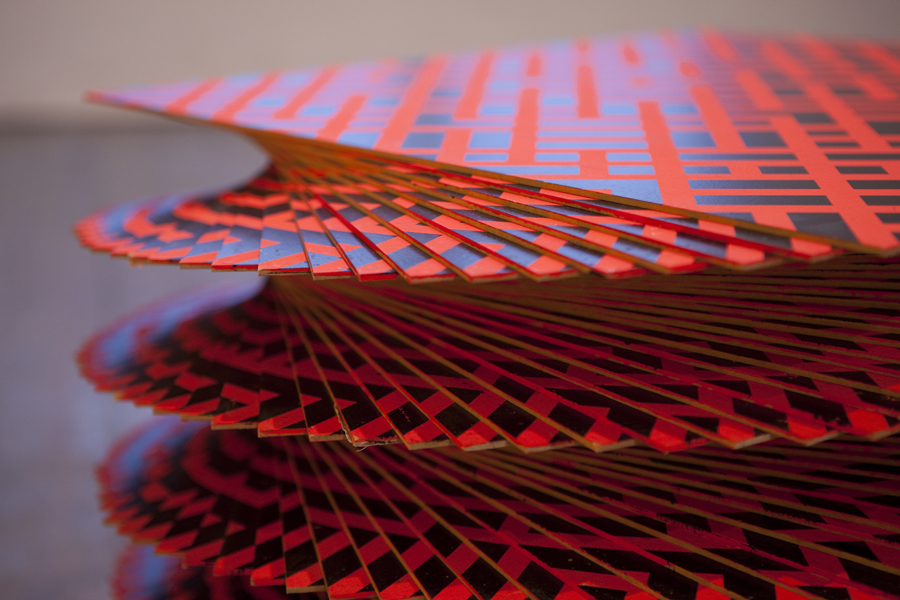Immersive and relentless, the paintings, videos and installations of Sam Songailo arrest our attention through both their sheer intensity and their tremendous associative powers. While clearly linked to a number of key antecedents (the work of Bridget Riley and the wall paintings of Sol LeWitt for example), Songailo’s work employs a distinctly personal aesthetic that owes as much to various imagined futures of film and literature as it does to the past. A number of commentators (including Songailo himself) have highlighted the futuristic character of the artist’s work, but to what future does it belong? Not the ray-gun Gothic of 1950s science-fiction, nor a post- apocalyptic dystopia. Songailo’s vision more closely resembles what we thought the future might be like in the eighties: the neon noir of Blade Runner, the cyberspace of Tron, even the 2015 posited by Back to the Future II (at the time of writing, amusingly imminent).
While his hard-edged approach and seizure-inducing palette might invite comparisons to Op Art of the 1960s, Songailo steers clear of the potential pitfalls associated with optical trickery. Keenly aware of how easily ‘effects’ can overwhelm a work of art, Songailo eschews the ‘I-get-it’ moment of the optical illusion in favour of more complex pictorial spaces. Recalling the isometric geometries of video game stalwart Q*Bert as well as such visual non-events as screensavers and television test patterns, the works evoke both frenetic movement and the aesthetics of stasis and downtime.
It seems inevitable, and perhaps even a little prosaic, that Songailo’s background in design will enter into any discussion of his work, but the relationship between his ‘day job’ and his art practice is an interesting and unexpected one. At first glance it would appear that the hard-edged, graphic quality of the work owes a lot to the field of design, and this may be true to an extent; however Songailo regards his practice as more of a reaction against the conventions and expectations of design than an extrapolation from it. Where a design brief generally demands that fixed meanings be conveyed as efficiently (and often as literally) as possible, Songailo uses the act of painting to open up more nuanced and mutable fields of meaning and interpretation. Defying easy reading and at times easy viewing, Songailo’s work rails against the easy-to-digest qualities of art as visual bumper sticker.
Written by Roy Ananda for the publication FELTspace GOLD 2011
Images Emily Taylor 2012
